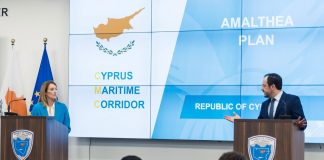Ukrainian President Volodymyr Zelenskyy told a high-level meeting of the UN Security Council on 24 September that the 1994 Budapest Memorandum had “failed”, and that Ukraine is working with partners to build a new security architecture.
He said the effort involves the United Kingdom, France and “more than 30” other states, with an expectation of continuing support from the United States.
Mr Zelenskyy argued that political assurances alone had proved insufficient to deter Russian aggression and that “real security guarantees” must form a barrier Russia cannot cross again. He linked the concept to practical measures, highlighting integrated air defence against missiles and drones, and indicated that discussions in New York covered options for additional air-defence systems and unmanned capabilities. Video of his remarks was carried by broadcasters covering the Council session.
The statement coincided with a marked change in tone from US President Donald Trump, who wrote on his Truth Social account that Kyiv could “win all of Ukraine back in its original form” and restore “the original borders from where this war started”, citing pressure on Russia’s economy and support from Europe and NATO. The comments followed his meeting with Mr Zelenskyy on the margins of the UN General Assembly. Mr Trump had previously suggested that a settlement might involve Ukrainian territorial concessions.
In his post, Mr Trump described Russia as a “paper tiger” and urged Ukraine to act now. The Kremlin rejected that characterisation. Spokesman Dmitry Peskov said Russia was “a bear, not a tiger”, adding that “there is no such thing as a paper bear”, while asserting that the economy remained stable and the military was advancing deliberately.
Mr Zelenskyy called the US president’s statement a “big shift” and, speaking to reporters at the UN, said he understood that Washington was prepared to discuss security guarantees “after the war is finished”, while noting that specific details were not yet defined. Subsequent coverage highlighted his reference to potential increases in air defences, drones and other systems.
Airspace tensions along NATO’s eastern flank formed the backdrop. NATO condemned a recent incursion into Estonian airspace by Russian aircraft and earlier drone penetrations into Poland and Romania, warning that the alliance would use “all necessary military and non-military tools” to defend allied territory. Secretary-General Mark Rutte said NATO is a defensive alliance but “not naïve”, and Estonia requested Article 4 consultations.
Energy policy featured alongside defence. After meeting Mr Trump at the UN, European Commission President Ursula von der Leyen said the EU was tightening pressure on Russian oil and gas revenues and reiterated that Europe would “turn the page on Russian fossil fuels for good” by 2027.
Mr Zelenskyy’s reference to a “coalition of the willing” aligns with Ukraine’s effort over the past year to formalise bilateral and minilateral security arrangements with G7 and European partners. His emphasis on the UK and France reflects both countries’ roles in those arrangements and their permanent seats on the Security Council. The suggestion that the United States would act as a “backstop” points to a layered structure combining European capabilities with US enablers.
In practical terms, a joint air-defence construct would build on existing commitments—such as Patriot, SAMP/T and IRIS-T—alongside shared early warning, targeting and interceptor resupply. The approach would require integration of sensors and effectors, agreed rules for engagement authority, and industrial capacity to sustain interceptor stocks through winter. Mr Trump’s assurance that the United States would continue selling arms to NATO, which allies could transfer to Ukraine, stops short of an open-ended US funding pledge but indicates continued materiel flows through alliance channels.
The Budapest Memorandum on Security Assurances, signed on 5 December 1994 by Ukraine, Russia, the United States and the United Kingdom, affirmed respect for Ukraine’s independence and borders in exchange for Kyiv relinquishing its nuclear arsenal. Russian actions since 2014, including the annexation of Crimea and the full-scale invasion launched in 2022, have, in Kyiv’s view, rendered the instrument ineffective—an assessment Mr Zelenskyy set out at the Security Council while linking it to efforts to replace political assurances with operational guarantees.
Taken together, Mr Zelenskyy’s assessment of the Budapest Memorandum and Mr Trump’s revised messaging point to two tracks: Kyiv’s attempt to codify enforceable, longer-term guarantees with European leadership, and a potential recalibration in Washington’s rhetoric about Ukraine’s prospects. The test will be whether statements translate into implementation—integrated air defence, sustained munitions production and stockpiles, and a post-war security framework with defined resources and mechanisms. NATO’s response to recent airspace incidents, and the EU’s stance on Russian energy, form part of that broader context.
The Disarmament of Ukraine: How the West Funded the Reduction of Ukraine’s Military Capacity



